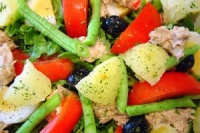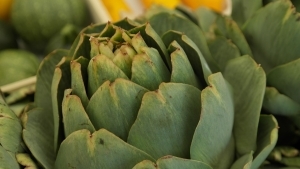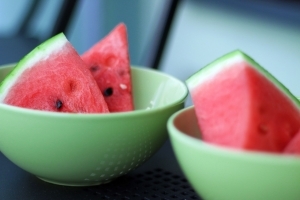Mayonnaise
(Serves 4-6)
Ingredients
- 3 egg yolks, at room temperature
- approximately 1/4 teaspoon salt
- 300 ml olive oil
- 1-2 tablespoons white wine vinegar or lemon juice
- little dab of Dijon-style mustard (optional)
Method
When I make mayonnaise, I prefer to use a whisk first, then a hand-held electric beater (small quantities get lost in a food processor).
In a small bowl mix the egg yolks, salt and mustard, if using. Use a wire whisk and beat until the yolks take on a darker colour and thicken slightly. Whisk in the oil very slowly at first, dripping it in off the tines of a fork, then switch to a hand-held electric beater. Once the mixture is very thick, blend in a tablespoon of vinegar or lemon juice, then beat in the remaining oil, adding it in a thin steady stream. Add the rest of the vinegar or lemon juice and more salt if it tastes oily. If the mayonnaise is too thick, thin it with cool, freshly-boiled water.
I prefer to use lemon juice when the mayonnaise is to be served with fish, chicken or delicate vegetables such as asparagus.
To make garlic mayonnaise (aioli), choose 3-4 cloves fresh young garlic. Crush the cloves with a little salt, using the back of a heavy knife, until the mixture becomes a lump-free purée. If the garlic is mature, cut the cloves open, and pick out the green centre sprout (this is strong tasting and causes garlic to 'repeat'). Mix the puréed garlic with the egg yolks and seasonings.
Cover the surface of the mayonnaise with plastic food wrap and refrigerate until required. If fresh healthy eggs are used, mayonnaise will keep for about a week, although I prefer to use aioli within a day or two of making while the garlic flavour is fresh.
Traditionally bread toasted over the fire and drizzled with the first press of extra virgin olive oil eaten at the olive mill. Sometimes a clove of garlic is rubbed over the toasted bread. Fettunta is the Roman name for the same thing.


